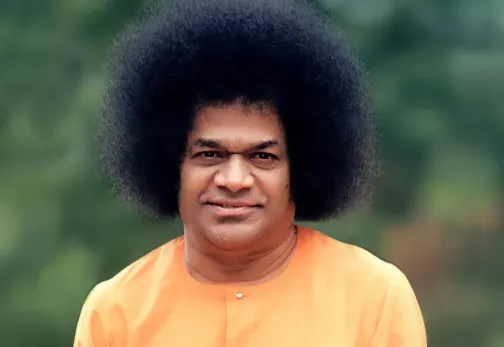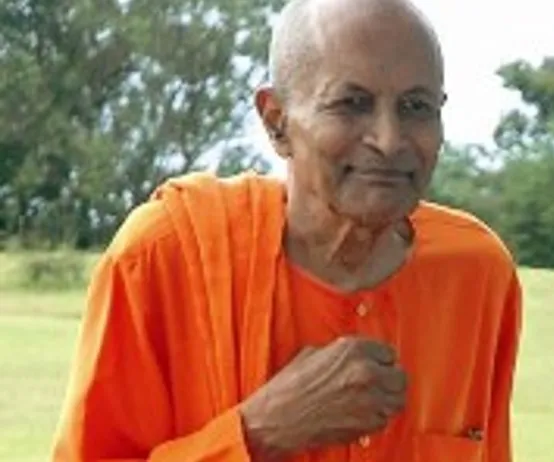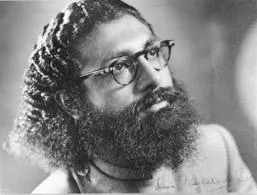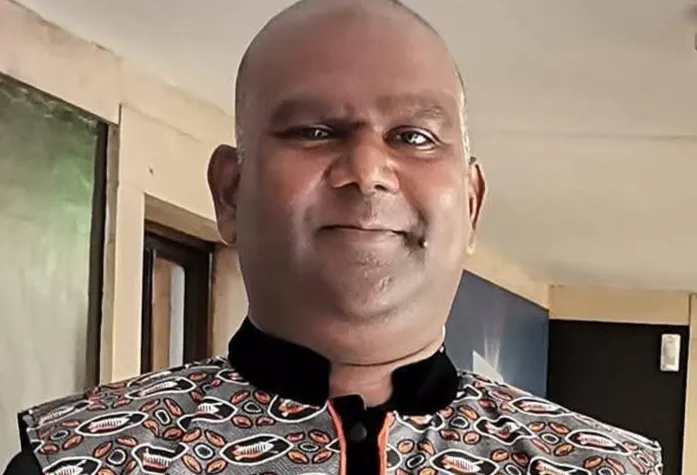How workers build nations
Sri Sathya Sai Baba, Swami Nischalananda, and Pujya Swami Sahajananda forged a new kind of worker, one who fought oppression not just with strikes, but with love in action, says Yogan Naidoo

Sathya Sai Baba
Image: Supplied
ON MAY 1, 1886, Chicago’s streets pulsed with the fury of 40 000 workers demanding dignity: “Eight hours for work, eight for rest, eight for what we will!”
For three days, the city teetered on the edge of revolt until May 3, when police gunned down strikers at McCormick Reaper Works, staining the cobblestones red. The next night, as rain drizzled over Haymarket Square, a bomb tore through the ranks of advancing police, igniting a massacre of wild gunfire and screaming men.
When the smoke cleared, seven officers and four workers lay dead, but the true horror came after. In a trial dripping with vengeance, eight anarchists were sentenced to death for their words, not deeds, their executions a warning to the working class. Yet from their gallows rose a global cry: May 1 would forever be a day of rebellion, baptised in the blood of Haymarket. The bomb’s echo never faded. The fight had just begun.
For centuries, the clash between capital and labour has shaped the modern world - a brutal dialectic between those who own the means of production and those whose sweat animates them. The Industrial Revolution birthed a new era of exploitation: factory owners, wielding steam-powered machinery like a weapon, extended workdays to 16 hours, while paying starvation wages. Karl Marx’s Das Kapital (1867) laid bare this systemic extraction - workers produced surplus value, while capitalists reaped rents through what David Harvey calls "accumulation by dispossession".
The 20th century offered brief respite through Fordist compromises and Keynesian mediation, but neoliberalism shattered this fragile equilibrium. Reagan and Thatcher's union busting, offshoring, and financialisation marked capital's counteroffensive - a ruthless reassertion of class power that persists today through platform capitalism's algorithmic domination and gig economy precarity. Yet Piketty's data reveals an ironic twist: our inequality now mirrors the very Gilded Age conditions that sparked labour’s original revolt.

Swami Sahajananda, founding president Divine Life Society SA.
Image: File
This eternal struggle adapts with each technological revolution - from steam power to artificial intelligence - but its core contradiction remains: workers still create all wealth yet control none of it. From warehouses to cafes, new generations are rediscovering that simple truth that animated the Haymarket martyrs - collective power is labour’s only answer to organised capital. The battle continues, not just for better wages, but for the fundamental right to govern our economic lives.
Back here at home the apartheid regime’s walls did not crumble from speeches alone - they were shaken to their foundations by the calloused hands of workers.
Cde Jay Naidoo recounts in "Fighting for Justice " how Cosatu's birth in 1985 became "a hammer against the system," turning factory floors into trenches of resistance. Workers didn’t just strike for wages; they withheld labour for a nation, their toyi-toyi marches syncing with township uprisings.
Cde Billy Nair, the dairy worker unionist-turned-Rivonia trialist, embodied this link - proving labour was both an economic force and a liberation army.

Swami Nischalanada, founding president of the Ramakrishna Centre SA.
Image: Supplied
The 1980s general strikes weren’t protests - they were collective withdrawals of consent against a pariah state, paralysing ports, mines, and power grids. Naidoo describes how the regime’s economy "choked on its own greed" as workers made business ungovernable. When negotiations finally came, it was because the capital’s masters, fearing total collapse, pushed President De Klerk to the table. The working class didn’t just support the struggle; they forced its victory, writing freedom not in ink, but in work stoppages, stay-aways, and the unbreakable solidarity of those who built South Africa with their labour, yet were denied its fruits.
When the first indentured labourers stepped onto Natal’s shores 165 years ago, they carried more than just their meagre belongings - they carried “Nishkama Karma,” the sacred principle of selfless service enshrined in the Bhagavad Gita. Through colonial brutality and apartheid’s whip, they fought not only for their own dignity but also lifted entire communities through unstoppable volunteerism. While their hands-built railways and harvested sugar cane, their spirits-built schools, clinics, and temples - resistance through compassion.
This year, we honour three luminous souls who embodied this ideal: Swami Nischalananda, founder of the Ramakrishna Mission in SA, which became a beacon of spiritual resilience; Pujya Swami Sahajananda, founder of the Divine Life Society of SA, who fed both bodies and souls; and Sri Sathya Sai Baba, whose organisations turned service into worship. They forged a new kind of worker, one who fought oppression not just with strikes, but with love in action. Their legacy? A nation reminded that true freedom grows when we serve without expecting reward - the highest form of revolution.
Returning from India as a monk, Swami Nischalananda carried Swami Vivekananda’s revolutionary spirit - igniting the Ramakrishna Centre with the mantra "For one’s own salvation and the welfare of the world".
Beyond philosophy, he built action as worship - launching free healthcare clinics, nutrition programs, and skills training across the province. This work continues sustainably today through the Glen Anil Ashram, Phoenix Ashram, and nationwide sub-centers. No racial barriers, only selfless service (seva) as a sacred duty. Today, hundreds of volunteers continue his legacy, proving spirituality isn’t an escape from struggle but fuel for liberation. The mission stands not just as a charity but as a beacon of collective upliftment, where every meal served, and every skill taught echoes Vivekananda’s fire.
Returning from Rishikesh, Pujya Swami Sahajananda transformed his guru’s (Swami Sivananda) humble instruction, "Learn to type and make tea," - into a revolution. Establishing South Africa’s most productive spiritual printing press, he flooded the apartheid landscape with Swami Sivananda’s liberating wisdom. But his true mastery lay in turning the teachings into tangible justice - building schools, crèches, skills development centers, and clinics across rural KZN for those crushed under apartheid’s boot.
With working-class volunteers as his hands, he forged social cohesion through service, proving spirituality without action is empty. His legacy? Not just infrastructure, but a blueprint for collective upliftment, where divine love became textbooks, medicine, and hope for the oppressed.
Though born in India and never setting foot on South African soil, Sri Sathya Sai Baba’s revolutionary message, "Manava Seva is Madhava Seva" (Service to humanity is worship of God), ignited a volunteer firestorm across the nation.
Today, Satya Sai centers stand as beacons of practical divinity, where devotees transform spiritual ideals into action:
- Nutrition projects feeding the hungry - Medical camps healing the sick - Clothing drives warming the vulnerable - Blood donation campaigns celebrated as "liquid love"
Swami’s teachings proved that borders cannot contain compassion and that true devotion wears the apron of service. In apartheid’s shadow, Sai volunteers built a silent army of love, proving God lives not in temples alone, but also in selfless hands at work.
On this Workers’ Day, we honour the eternal struggle against exploitation, but today, we also claim a higher truth: labour is also love in action.
The centenary birth anniversary of Swami Nischalananda, Pujya Swami Sahajananda, and Sri Sathya Sai Baba reminds us that the holiest work wears no price tag. These giants taught us that true power lies not in demanding rewards, but in giving without measure, feeding the hungry, healing the sick, and educating the oppressed because it is sacred, not because it is profitable.
Imagine a South Africa where every trade union hall, every factory floor, every corporate office echoes with this spirit, where we fight exploitation not just with strikes but with a tidal wave of collective care. The clinics built by devotees, the schools raised by volunteers, the blood donated by strangers - these are the blueprints for a new economy of the heart.
Let this be our pledge: we will labour not only for wages but for liberation; not only for ourselves but for all. The three luminous souls we celebrate this year proved that when we serve selflessly, we don’t just change policies - we change the moral fabric of society. Now, let us take up their mantle. Let us be workers and healers of the world. The revolution is not coming - it is here, in our hands, in our hearts, in our willingness to build even when no one is watching.
May we have an introspective and contemplative Workers Day.

Yogan Naidoo
Image: Supplied
Yogan Naidoo is a graduate of International Relations (LSE), and activist for peace and harmony through spirituality.
** The views expressed do not necessarily reflect the views of IOL or Independent Media.
Related Topics: